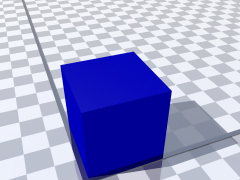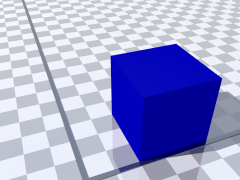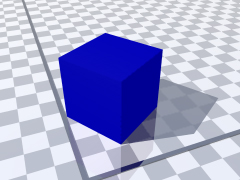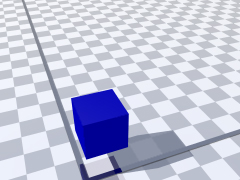the left image is a scene of a blue box aligned next to the x and z axis borders.
the right image is a scene of the blue box after translating to the right. it has moved away from the z axis border, but is still aligned to the x axis border. the code used is as follows:
the right image is a scene of the blue box after translating to the right. it has moved away from the z axis border, but is still aligned to the x axis border. the code used is as follows:
line98: translate <1.0, 0.0, 0.0>this line is used in the box object. the values enclosed with the angle brackets represent the xyz coordinates. in this case, the blue box has moved 1.0 to the right along the x axis, but did not move upwards or forwards along the y and z axes.



